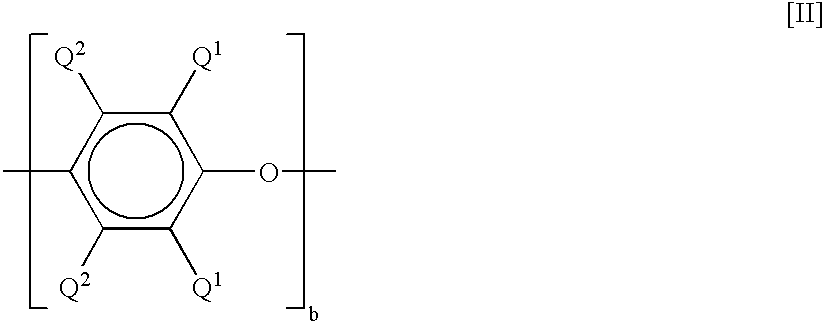Thermoplastic resin composition
a technology of thermoplastic resin and composition, which is applied in the direction of non-metal conductors, conductors, transportation and packaging, etc., can solve the problems of reducing the mechanical strength and fluidity forcing to sacrifice some of the innate, and increasing the demand for reducing the tendency of conductive resin-made electric and electronic parts to collect dust and dirt, etc., to achieve excellent conductivity and anti-static properties
- Summary
- Abstract
- Description
- Claims
- Application Information
AI Technical Summary
Benefits of technology
Problems solved by technology
Method used
Image
Examples
examples
[0058]The present invention is further illustrated by the following examples, but it is to be understood that the scope of the present invention is not limited by these examples in any way. In the examples shown below, the specific properties of the components used are as described below. Also, in the following Examples and Comparative Examples, the shown amounts of the components blended are parts by weight, and the evaluation tests on the obtained compositions were conducted in the manner described below.
Component A thermoplastic resin:
[0059](A-1) PC: poly-4,4-isopropylidenediphenyl carbonate having a viscosity-average molecular weight of 21,000 (abbreviated as PC)[0060](A-2) PPE: poly-2,6-dimethyl-1,4-phenylene ether having an intrinsic viscosity (measured in chloroform at 30° C.) of 0.40 dl / g (abbreviated as PPE)[0061](A-3) SEBS: hydrogenated styrene-butylene-styrene block copolymer (Kraton G1650 produced by Kraton Polymers Japan Ltd.) (abbreviated as SEBS)[0062](A-4) ABS: ABS r...
examples 1 to 16
[0085]Intermediate composition X, intermediate composition Y, component A, component B and additive components were weighed out at the rates shown in Table 5 and mixed uniformly by a tumbling mixer, and the obtained mixtures were melted and kneaded by a twin-screw extruder (30 mmφ) at a cylinder temperature of 280° C. and a screw speed of 150 rpm, and pelletized to prepare the samples of thermoplastic resin composition according to the present invention. These samples of thermoplastic resin composition were molded into test pieces by an injection molding machine (mfd. by Sumitomo Nestal Co., Ltd.; clamping force=75 tons) at a cylinder temperature of 280° C. and a mold temperature of 80° C., and the test pieces were subjected to the evaluation tests. The test piece used for measuring volume resistivity was as described above. The type and ratio (wt %) of the resin having an island-and-sea micro structure, the type of carbon black, and the type and ratio (wt %) of the resin phase cont...
PUM
| Property | Measurement | Unit |
|---|---|---|
| specific surface area | aaaaa | aaaaa |
| specific surface area | aaaaa | aaaaa |
| melting point | aaaaa | aaaaa |
Abstract
Description
Claims
Application Information
 Login to View More
Login to View More - R&D
- Intellectual Property
- Life Sciences
- Materials
- Tech Scout
- Unparalleled Data Quality
- Higher Quality Content
- 60% Fewer Hallucinations
Browse by: Latest US Patents, China's latest patents, Technical Efficacy Thesaurus, Application Domain, Technology Topic, Popular Technical Reports.
© 2025 PatSnap. All rights reserved.Legal|Privacy policy|Modern Slavery Act Transparency Statement|Sitemap|About US| Contact US: help@patsnap.com



